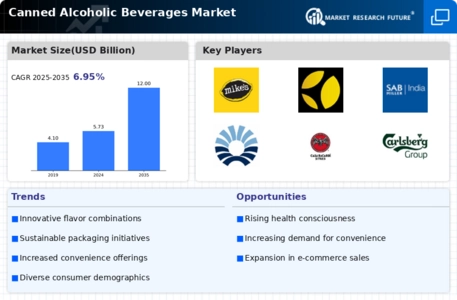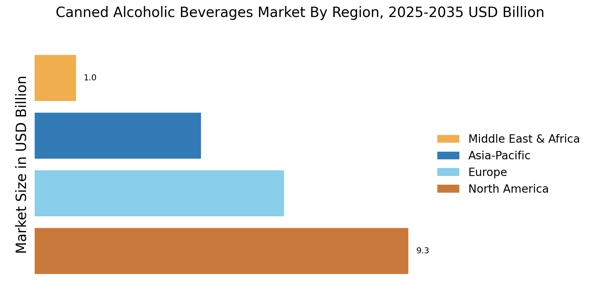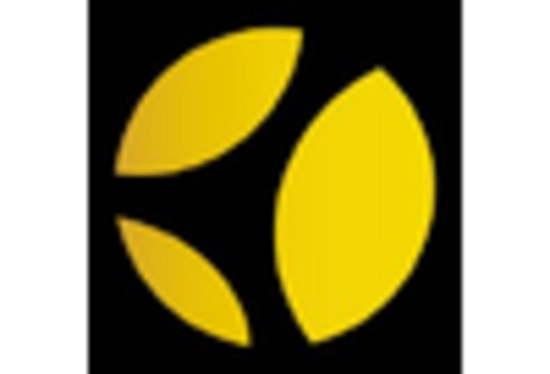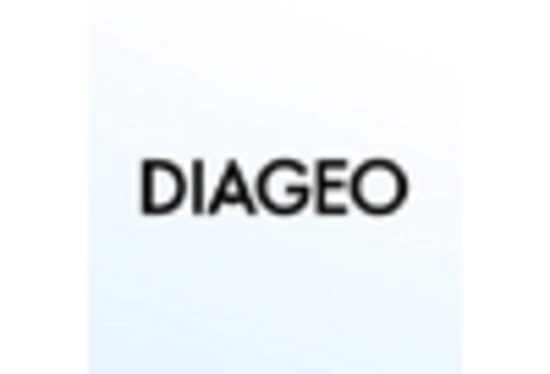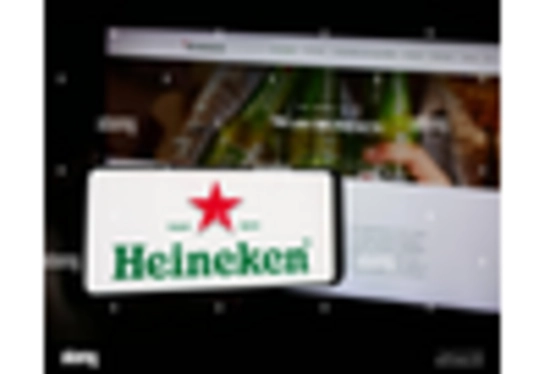Health-Conscious Choices
In the canned alcoholic beverages Market, there is a growing inclination towards health-conscious choices among consumers. This trend manifests in the increasing popularity of low-calorie, low-sugar, and organic alcoholic beverages. As individuals become more aware of their dietary choices, they seek options that align with their health goals. Data indicates that the segment of health-oriented canned alcoholic beverages has expanded by nearly 20% in recent years, reflecting a significant shift in consumer priorities. Brands that successfully incorporate healthier ingredients and transparent labeling are likely to capture a larger share of the market. This focus on health not only influences product development but also shapes marketing strategies within the Canned Alcoholic Beverages Market, as companies aim to resonate with a more health-conscious consumer base.
Evolving Social Drinking Culture
The Canned alcoholic beverages Market is significantly influenced by the evolving social drinking culture. As social gatherings and outdoor activities gain popularity, consumers increasingly opt for portable and shareable beverage options. This cultural shift is evident in the rise of canned cocktails and flavored malt beverages, which cater to diverse tastes and preferences. Recent surveys indicate that nearly 60% of consumers prefer canned options for social events, highlighting the importance of convenience in social settings. This trend not only drives sales but also encourages brands to innovate and diversify their product offerings. The canned alcoholic beverages Market stands to benefit from this cultural evolution, as companies adapt to the changing dynamics of social interactions and consumer expectations.
Rising Demand for Ready-to-Drink Options
The Canned Alcoholic Beverages Market experiences a notable surge in demand for ready-to-drink (RTD) options. Consumers increasingly favor convenience, seeking products that require minimal preparation. This trend is particularly pronounced among younger demographics, who often prioritize portability and ease of consumption. According to recent data, the RTD segment has witnessed a growth rate of approximately 15% annually, indicating a robust shift in consumer preferences. As lifestyles become busier, the appeal of canned alcoholic beverages, which offer a quick and accessible drinking experience, continues to expand. This shift not only reflects changing consumer habits but also suggests a potential for further innovation within the Canned Alcoholic Beverages Market, as brands strive to meet the evolving needs of their target audiences.
Technological Advancements in Production
Technological advancements play a crucial role in shaping the Canned Alcoholic Beverages Market. Innovations in production techniques, such as improved canning processes and flavor extraction methods, enhance product quality and consistency. These advancements enable manufacturers to experiment with new flavors and formulations, catering to the diverse preferences of consumers. Data indicates that companies investing in technology have reported a 25% increase in production efficiency, allowing for greater scalability and reduced costs. As competition intensifies, the ability to leverage technology will likely become a key differentiator in the market. The Canned Alcoholic Beverages Market stands to benefit from these advancements, as they not only improve operational efficiency but also foster innovation in product development.
Sustainability and Eco-Friendly Packaging
Sustainability has emerged as a pivotal driver in the Canned Alcoholic Beverages Market. Consumers are increasingly concerned about environmental impact, prompting brands to adopt eco-friendly practices. The use of recyclable materials and sustainable sourcing is becoming a standard expectation rather than a differentiator. Recent studies suggest that approximately 70% of consumers are willing to pay a premium for products that demonstrate environmental responsibility. This shift not only influences purchasing decisions but also compels companies to rethink their packaging strategies. As sustainability becomes integral to brand identity, the Canned Alcoholic Beverages Market is likely to see a rise in products that prioritize eco-consciousness, appealing to a demographic that values both quality and environmental stewardship.


